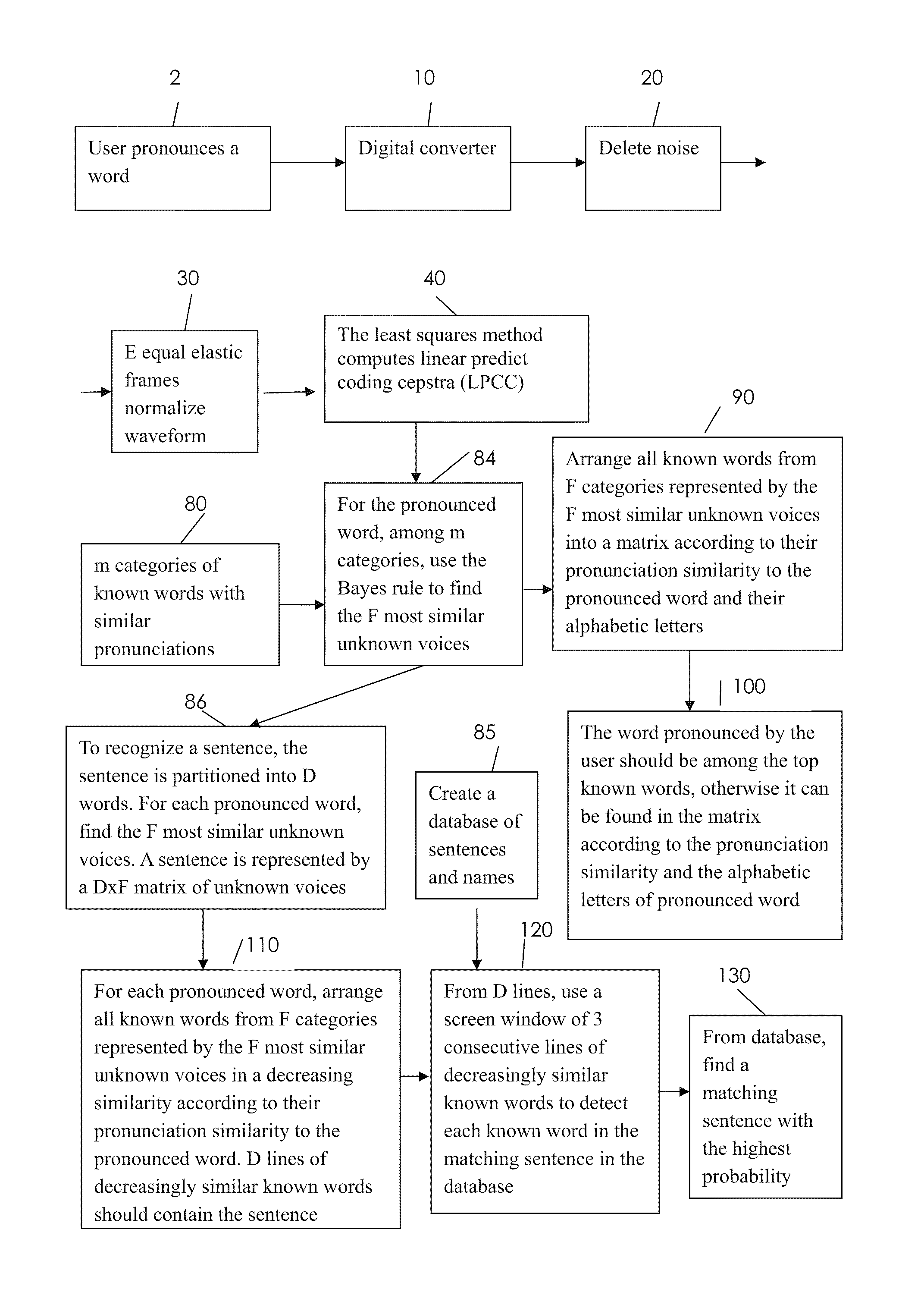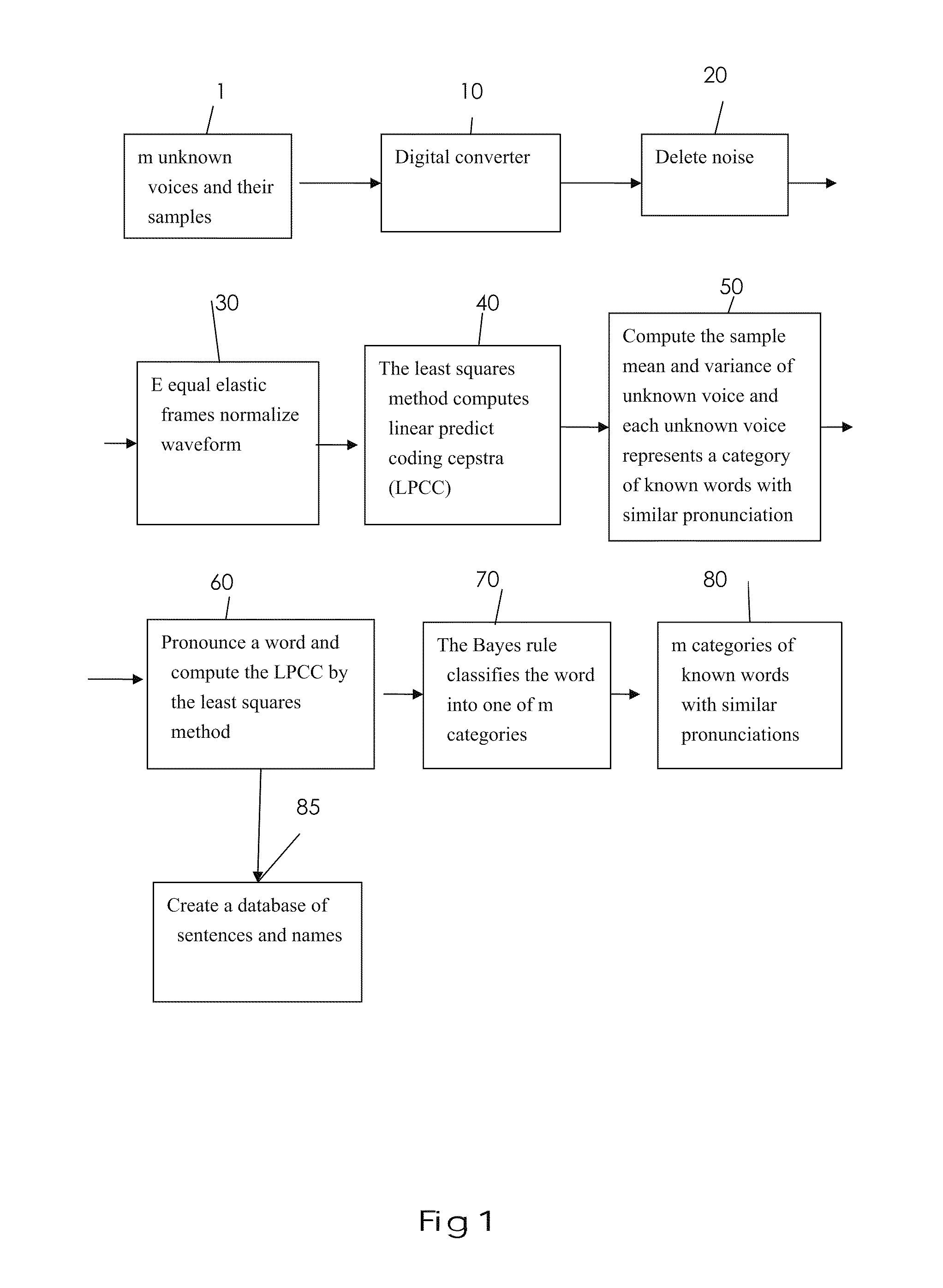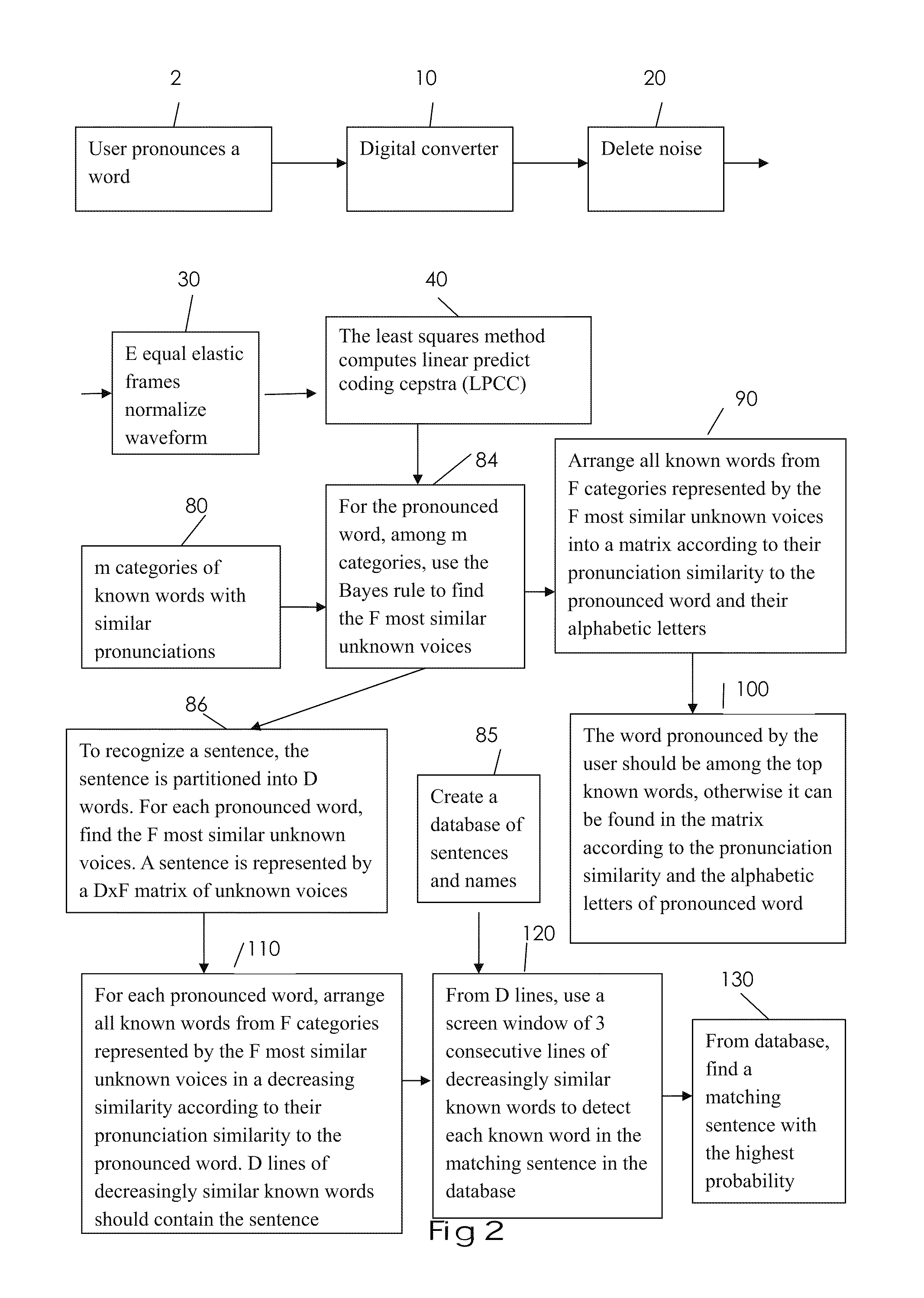Method for Speech Recognition on All Languages and for Inputing words using Speech Recognition
a speech recognition and language technology, applied in speech recognition, speech analysis, instruments, etc., can solve the problems of increasing increasing the difficulty of speech recognition, so as to achieve the effect of easy use of the invention to recognize and input words and reducing the probability of misclassification
- Summary
- Abstract
- Description
- Claims
- Application Information
AI Technical Summary
Benefits of technology
Problems solved by technology
Method used
Image
Examples
Embodiment Construction
[0034]A word has one to several syllables and a Chinese syllable is also a word with one syllable. A voice is a pronunciation of a word. In FIG. 1, the invention needs m unknown voices 1. Each unknown voice has samples and each unknown voice represents a category of known words which have the most similar pronunciation to the unknown voice. The invention also needs a sentence and name database. Digital converter 10 converts the waveform of each unknown voice or a word into a series of digital sampled signal points. A preprocessor 20 receives the series of digital signals from the digital converter 10 to delete the noise and the time intervals which do not have speech digital signals. After deletion of noise, then the total length of the new waveform denoting the voice or the word is uniformly partitioned into E equal segments by E equal elastic frames (windows) 30 without filter and without overlap. Since the length of each equal frame is proportional to the total length of the wave...
PUM
 Login to View More
Login to View More Abstract
Description
Claims
Application Information
 Login to View More
Login to View More - R&D
- Intellectual Property
- Life Sciences
- Materials
- Tech Scout
- Unparalleled Data Quality
- Higher Quality Content
- 60% Fewer Hallucinations
Browse by: Latest US Patents, China's latest patents, Technical Efficacy Thesaurus, Application Domain, Technology Topic, Popular Technical Reports.
© 2025 PatSnap. All rights reserved.Legal|Privacy policy|Modern Slavery Act Transparency Statement|Sitemap|About US| Contact US: help@patsnap.com



